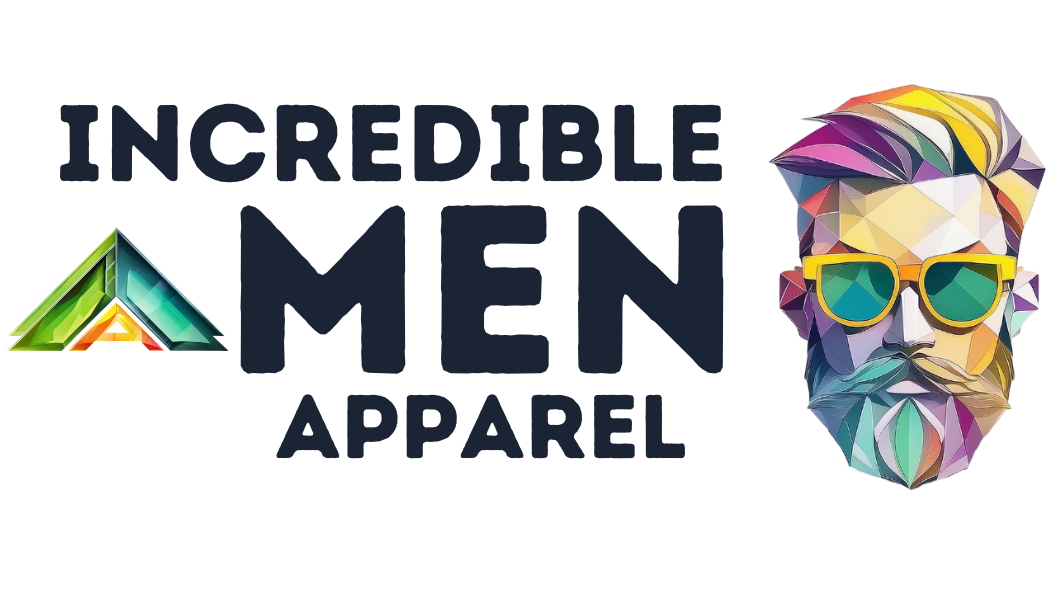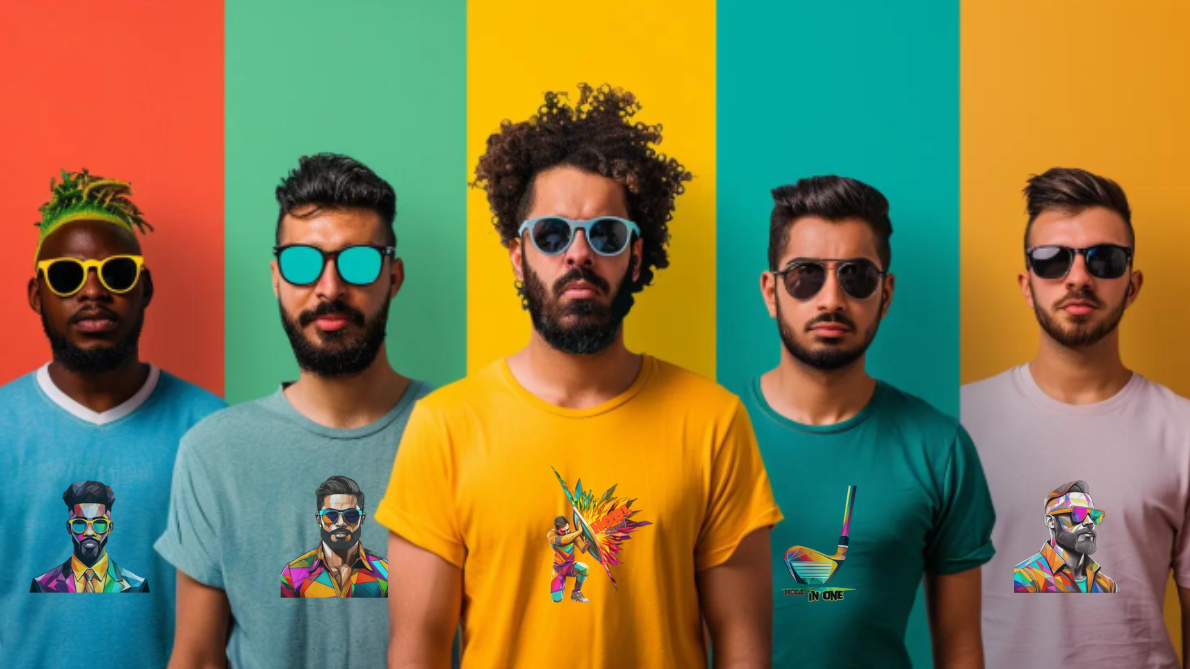
Embrace Diversity: Inclusive Men's Cultural Apparel Options
Inclusive men’s cultural apparel is about taking traditional dress and makg it welcoming for every man—no matter his size, how he expresses his gender, or his mobility. It’s a way to celebrate heritage and modern comfort together. This approach tackles the old issues of limited sizing, strict gender norms, and accessibility barriers in ethnic wear. In this guide, you’ll discover:
-
What inclusive cultural apparel truly means and why it’s so important.
-
A look at key garments—from dashikis to kilts—designed for all body types.
-
How adaptive design makes clothing more accessible.
-
The way gender-neutral styling is changing traditional menswear.
-
The significance of ethical sourcing, sustainability, and working with artisans.
-
Practical advice on care, accessories, and styling for different occasions.
Keep reading to see how inclusive men’s cultural apparel brings together heritage and new ideas, offering a wardrobe that honors global traditions while empowering every man to wear his culture with pride and ease.
What Exactly Is Inclusive Men’s Cultural Apparel, and Why Does It Matter?
Inclusive men’s cultural apparel refers to clothing inspired by cultural heritage that has been thoughtfully redesigned to fit diverse body shapes, gender expressions, and physical abilities. This evolution opens up traditional garments to more people, especially those who might have felt excluded due to size limitations, gender expectations, or functional challenges. For instance, a plus-size kurta with adjustable side seams honors South Asian craftsmanship while ensuring comfort and confidence for a wider range of body types.
By making ethnic dress more accessible, this movement champions social equity, respects cultural stories, and creates a space where everyone can connect with their identity. Understanding these core ideas is key to exploring how inclusivity shapes design, fit, and function.
How Is Inclusivity Revolutionizing Traditional Menswear?
Inclusivity transforms traditional menswear by moving away from one-size-fits-most cuts towards adaptable silhouettes, easier closures, and neutral styling. When designers incorporate adjustable waistbands, magnetic fastenings, and unisex tailoring, garments like the dashiki evolve from specific cultural symbols into universally wearable pieces. These design innovations ensure that cultural attire remains both authentic and accessible, blending heritage techniques with inclusive engineering.
As these adaptive methods become more common, the concept naturally leads into the specific features that define gender-neutral and adaptive cultural clothing.
What Are the Core Elements of Gender-Neutral and Adaptive Cultural Clothing?
Gender-neutral and adaptive cultural clothing combines flowing silhouettes, inclusive sizing, and practical closures to create garments that go beyond traditional boundaries. Key elements include:
-
Flowing Silhouettes: Relaxed fits and straight hemlines remove gender-specific shaping.
-
Adjustable Features: Discreet zippers, drawcords, and magnetic closures make dressing easier.
-
Expanded Size Ranges: From petite to plus-size, inclusive brands offer measurements that cater to diverse body types.
-
Comfort-Focused Materials: Soft, breathable fabrics are chosen to minimize irritation for those with sensory sensitivities.
-
Versatile Colors and Patterns: Adaptable prints that suit a wide range of styles and identities.
|
Garment Feature |
Inclusive Attribute |
Specific Benefit |
|---|---|---|
|
Drawcord Waistband |
Customizable fit |
Comfortably accommodates changes in waist size |
|
Magnetic Front Closure |
Effortless dressing |
Simplifies dressing for those with limited dexterity |
|
Unisex Tailoring |
Neutral silhouette |
Blurs gender lines, welcoming non-binary individuals |
|
Stretch-Woven Fabric |
Enhanced movement |
Supports wheelchair users and active lifestyles |
-
otland)
-
Lederhosen (Germany)
This overview sets the stage for exploring each garment’s cultural background and its adaptive transformations.
What Defines an Inclusive Dashiki and Its Cultural Importance?
An inclusive dashiki reimagines the vibrant West African tunic with extended sizing, gender-neutral cuts, and optional side-seam adjustments. Traditionally a symbol of African heritage and community, the dashiki gains deeper meaning when offered in plus-size fits and unisex patterns. Magnetic or snap-front closures replace buttons for easier dressing, and breathable cotton ensures comfort in various climates.
Inclusive dashikis honor their ceremonial roles—for festivals and rites of passage—while also being suitable for everyday wear, signifying that cultural pride is for all body types.
How Are Modern Kurtas Designed to Fit All Body Types?
Modern kurtas embrace adaptive tailoring with features like drawcord waists, side vents, and adjustable lengths. These elements allow the garment to adapt to different sizes, from XS to 5XL. Traditional kurta embroidery and block prints remain, while elastic gussets at the hips offer greater freedom of movement for both taller and shorter individuals.
By combining artisan craftsmanship with functional design, inclusive kurtas beautifully merge South Asian heritage with modern inclusivity standards.
Transform Your Style: The Impact of Men's Adaptive Fashion
This article highlights how adaptive fashion enhances men's ethnic wear, particularly in India, by incorporating features like magnetic buttons in kurtas and elasticized dhotis. These innovations provide flexibility, comfort, and independence for men with physical disabilities, allowing them to dress stylishly without assistance.This research directly supports the article's discussion on adaptive features in traditional garments like kurtas and dhotis, emphasizing their role in boosting accessibility and wearer independence.
What Makes Gender-Neutral Kimonos a Versatile Wardrobe Staple?
Gender-neutral kimonos feature straight-cut bodies, unisex patterns, and adjustable sashes instead of traditional obi belts. These design choices move away from the gendered expectations found in conventional Japanese attire. Wide sleeves make them easier to put on for wheelchair users, and unstructured collars suit various neck sizes. Made from soft linen or silk blends, these kimonos serve as adaptable outerwear or traditional pieces, inviting men of all expressions to connect with East Asian sartorial heritage.
Free from conventional gender coding, these kimonos are versatile essentials for an inclusive wardrobe.
How Are Adaptive Features Incorporated into Thobes and Agbadas?
Adaptive thobes and agbadas include sensory-friendly fabrics, magnetic closures along the front placket, and hidden zippers on the sleeves. The design maintains the flowing silhouettes essential to Middle Eastern and West African ceremonial dress, while allowing for easy one-handed dressing and accommodating prosthetics. Adjustable neckline tabs offer a customized fit without altering the garment’s elegant drape.
These adaptive elements ensure that religious and festive attire remains accessible to men with diverse physical abilities.
How Are Kilts and Lederhosen Being Reimagined for a Wider Audience?
Modern kilts now feature hook-and-loop closures instead of buckles for quicker fastening, and adjustable straps that accommodate a broader range of waist sizes. Lighter wool blends replace heavier fabrics to reduce bulk, making them more practical for travel and active use. Lederhosen incorporate elasticized side panels and gusseted inseams, providing flexibility for larger thighs and accommodating different heights.
These updated versions preserve the garments’ Scottish and Germanic roots while welcoming broader participation across different body types and mobility levels.
How Does Adaptive Design Elevate Accessibility in Cultural Menswear?
Adaptive design makes cultural menswear more manageable for individuals with disabilities, limited mobility, or sensory sensitivities. By redesigning traditional garments with helpful features, designers promote independence and reduce daily challenges. Adaptive principles are applied to closures, fabrics, and construction, creating clothing that respects cultural aesthetics and meets functional needs.
Understanding common adaptive features clarifies how these designs support various lifestyles and physical requirements.
What Adaptive Features Are Commonly Found in Traditional Menswear?
-
Magnetic Closures: These replace buttons, allowing for one-handed fastening.
-
Hidden Zippers: Discreetly integrated zippers enable easy dressing without changing the garment’s look.
-
Adjustable Straps and Drawcords: These allow for precise adjustments to waistbands and sleeves.
-
Elastic Waistbands: Provide comfort and flexibility for a variety of body shapes.
-
Sensory-Friendly Linings: Soft, tagless fabrics are used to minimize irritation.
This combination of features transforms ceremonial attire into clothing that supports daily independence. These innovations naturally lead into how adaptive cultural clothing benefits men with disabilities.
How Does Adaptive Cultural Clothing Empower Men with Disabilities?
Adaptive cultural clothing enhances autonomy by removing barriers to dressing. Magnetic front plackets eliminate the need for fine motor skills, and elasticized components make dressing easier for wheelchair users. Breathable, hypoallergenic materials support skin health for individuals with sensory processing differences. As a result, men with disabilities can fully participate in cultural and religious events, celebrating their heritage without needing assistance.
This user-focused approach highlights which brands are leading in this specialized area.
Which Brands Are Leading the Way in Adaptive Cultural Apparel for Men?
-
IZ Adaptive: Offers adaptive sherwanis and kurtas featuring magnetic fastenings.
-
June Adaptive: Designs adaptive thobes with easy-access closures.
-
AbleCufflinks: Creates adjustable accessory kits for traditional attire.
-
MagnaReady: Provides magnet-enabled shirts and jackets that complement ethnic wear styles.
These pioneering brands combine technical skill with cultural understanding, setting new standards for inclusive ethnic clothing. Their leadership is driving the broader adoption of adaptive design principles across the industry.
How Is Gender-Neutral Fashion Influencing Modern Men’s Cultural Apparel?
Gender-neutral fashion breaks down binary expectations by offering unisex cuts, inclusive sizing, and neutral color palettes. In cultural menswear, this trend means tunics, jackets, and robes are styled without gender-specific tailoring. By emphasizing fluid silhouettes and freedom in pattern choice, designers empower non-binary and traditionally masculine-presenting men to express their identity through heritage dress.
The Evolution of Unisex Clothing
This academic paper explores the evolution of unisex clothing, noting its role in breaking traditional gender boundaries in fashion. It discusses how people choose clothes based on preference rather than gender, and highlights India's cultural diversity in embracing gender-fluid expressions and identities throughout history.This study provides academic backing for the article's exploration of gender-neutral styling and how gender fluidity is reshaping menswear traditions, particularly in cultural contexts like India.
What Are Some Examples of Gender-Neutral Ethnic Wear for Men?
-
Unisex gabardine kurta jackets with straight hemlines.
-
Oversized dashiki robes in subtle earth tones.
-
Open-front kimonos secured with adjustable belts.
-
Relaxed-fit thobe-style tunics made from breathable linen.
-
Modular agbada coats with interchangeable sleeves.
These pieces work across different gender identities, emphasizing that cultural attire doesn’t need to follow strict binary rules. Highlighting this versatility sets the stage for discussing how gender fluidity impacts menswear more broadly.
How Does Gender Fluidity Affect Traditional Menswear Styles?
Gender fluidity encourages a fresh look at masculine cuts, embracing drapes, volume, and embellishments often associated with women’s fashion. This leads to fabrics once exclusive to women’s saris or obi sashes appearing in men’s cultural wear, alongside a greater acceptance of bold colors and patterns. This creative exchange revitalizes timeless silhouettes, inspiring designers to experiment with asymmetry, layered looks, and non-binary decorative elements.
The fluid approach to heritage dress naturally leads into practical styling advice.
How Can Men Style Gender-Neutral Cultural Clothing for Different Occasions?
To style gender-neutral cultural attire:
-
For formal events, layer a straight-cut kurta under a partially open agbada, paired with simple loafers.
-
At festivals, tie a loose dashiki with wide-leg pants and add statement jewelry.
-
For everyday wear, combine a lightweight unisex kimono with a T-shirt and jeans.
-
For relaxed gatherings, wear a neutral-toned thobe with embroidered vests and comfortable slip-on shoes.
By adapting accessories, footwear, and complementary items, men can confidently navigate any occasion while honoring their cultural roots and personal style.
How Do Ethical Sourcing and Sustainability Influence Inclusive Men’s Cultural Apparel?
Ethical sourcing and sustainability uphold the integrity of inclusive cultural apparel by ensuring that materials and labor practices respect both people and the planet. When artisans receive fair wages and fabrics come from organic, renewable sources, each garment reflects cultural authenticity and environmental responsibility.
Examining these values clarifies why genuine representation and thoughtful material choices are so important.
Why Is Authentic Cultural Representation Crucial in Menswear?
Authentic cultural representation honors the narratives embedded in traditional clothing and supports the artisans who preserve these legacies. Collaborations with heritage weavers, embroiderers, and dyers keep centuries-old techniques alive while ensuring communities benefit financially. This transparent approach prevents superficial appropriation and fosters genuine appreciation.
Preserving authenticity naturally leads to discussions about choosing sustainable fabrics.
What Sustainable Materials Are Used in Inclusive Cultural Clothing?
Inclusive cultural collections are increasingly featuring:
-
Organic Cotton: Grown without harmful pesticides, offering breathability and durability.
-
Handwoven Silk: Produced in small batches, minimizing environmental impact and supporting artisans in rural areas.
-
Linen: Made from flax, a plant that requires less water and fewer chemicals.
-
Recycled Wool Blends: Repurposing textiles from landfills while maintaining warmth and structure.
-
Bamboo Fabrics: A fast-growing and biodegradable material that provides a soft drape.
Choosing these materials helps maintain garment quality and aligns with responsible consumer choices.
How Do Fair Trade Practices Support Artisans and Their Communities?
Fair trade practices ensure fair pay, safe working conditions, and access to education for artisan communities. By providing living wages, brands enable cultural keepers to continue their traditional crafts. Investments in community resources—like weaving centers and training programs—strengthen economic stability and ensure that the production of cultural apparel benefits entire regions.
This ethical framework is the foundation for long-term sustainability and positive social impact.
How Can Men Care for and Style Inclusive Cultural Apparel?
Proper care and styling help extend the life and versatility of inclusive cultural garments. Whether the fabric is delicate silk or an adaptive weave, following specific guidelines will preserve the color, shape, and functional features. Thoughtful accessorizing further enhances each outfit, ensuring cultural relevance and personal comfort.
These practical tips offer guidance on maintenance and styling for every occasion.
What Are the Best Ways to Care for Traditional and Adaptive Fabrics?
-
Hand-wash or machine-wash on gentle cycles using mild detergents to protect delicate fibers.
-
Air-dry flat or hang in the shade to prevent shrinking and fading.
-
Store garments flat or on padded hangers to maintain their shape.
-
Spot-clean magnetic closures and zippers to ensure they continue to function smoothly.
-
Iron on a low setting, using a pressing cloth for delicate embroidery.
Consistent care practices help garments last longer and preserve their adaptive features.
How Should Men Accessorize Inclusive Men’s Cultural Clothing?
Accessorizing cultural apparel involves balancing authenticity with personal expression. Consider these options:
-
Statement belts with magnetic closures to enhance the garment’s drape.
-
Comfortable hats or turbans made from breathable fabrics, suitable for sensory needs.
-
Simple beaded necklaces or bracelets that echo cultural designs.
-
Versatile scarves or stoles for creating layered looks.
-
Easy-to-wear slip-on leather or fabric shoes.
Thoughtful accessories complete each ensemble while respecting cultural contexts.
What Are Some Styling Tips for Inclusive Cultural Apparel for Weddings, Festivals, and Everyday Wear?
For special occasions, pair richly embroidered kurtas with tailored trousers and smart loafers. At festivals, embrace vibrant prints and flowing robes for dynamic movement. For daily wear, integrate unisex kimonos or dashikis over casual tees and jeans. Combining heritage pieces with modern staples—like sneakers or chinos—creates a balanced look that honors tradition without sacrificing practicality.
By adapting cultural garments to suit different settings, men can express their identity with confidence and ease.
Inclusive men’s cultural apparel bridges the gap between tradition and inclusivity, offering garments that celebrate heritage while embracing diversity in body shape, gender identity, and physical ability. Through adaptive design, gender-neutral styling, ethical sourcing, and mindful care, every man can experience the richness of global cultures with comfort and authenticity. This comprehensive approach ensures that traditional menswear remains relevant, accessible, and empowering for generations to come.
These fundamental elements guide the evolution of diverse traditional menswear, ensuring cultural authenticity and modern adaptability work hand-in-hand.
Which Body Types and Gender Expressions Are Embraced in Inclusive Menswear?
Inclusive menswear celebrates a wide array of body shapes—petite, tall, plus-size, athletic—and welcomes masculine, feminine, non-binary, and fluid gender expressions. By using carefully graded size charts, adjustable panels, and draping cuts, brands can meet the needs of big-and-tall, slim, and average builds. For example, a gender-neutral kimono with wide sleeves and an open front works well for both slender and curvier ps, while adjustable-length kilts accommodate different heights.
Featuring diverse identities in fashion shows and campaigns reinforces that cultural dress is for everyone. This inclusive spirit fosters a sense of belonging and paves the way for specialized adaptive solutions.
What Traditional Cultural Garments Are Making Waves in Inclusive Menswear Collections?
Traditional garments are being reimagined for inclusivity, blending heritage details with contemporary needs. Collections often feature dashikis, kurtas, kimonos, thobes, agbadas, kilts, and lederhosen, each thoughtfully adapted for easy wear across various body types and abilities.
-
Dashikis (West Africa)
-
Kurtas and Sherwanis (South Asia)
-
Kimonos (East Asia)
-
Thobes and Agbadas (Middle East, West Africa)
-
Kilts (Sc







Share and get 15% off!
Simply share this product on one of the following social networks and you will unlock 15% off!